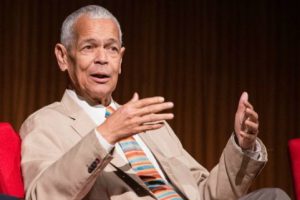Almost no one was donating via the Internet in 2001. People were barely Googling, much less donating by text. Social network? That was called your Rolodex. Cell phones were starting to become prevalent, but the average person probably thought a “smart phone” was a potential joke punchline.
The attacks changed the way we travel, whether by air or public transportation, but also forged a feeling of unity and nationalism in the days and weeks after.
Some $2.6 billion was raised in the year following the September 11, 2001 terrorist attacks. The Center on Philanthropy (CoP) at Indiana University in Indianapolis, Ind., began tracking aggregate giving for individual disasters after September 11, and developed a study of giving for a large-scale disaster.
It was a turning point in the American philanthropy, according to Una Osili, Ph.D., director of research, at the CoP. The attacks were the beginning of “large-scale philanthropic responses to both national and international responses, at least from a data standpoint,” she said.
September 11 was unique in that, of the $1.1 billion raised more than one-quarter of was from corporations and 13 percent from foundations. Individual giving comprised about 61 percent, with more than 70 percent of American households giving to relief efforts.
Giving by corporations and foundations, as well as to international affairs, has persisted during the past decade, Osili said, citing the attacks as the “beginning of organized philanthropy around disasters.” It coincided with a lot of interest in strategic giving, Osili said, and giving to international affairs has been among the fastest-growing subsectors of philanthropy. “It made us more sensitive to disasters in other countries, whether manmade or natural, we’ve seen large-scale responses to those disasters,” Osili said.
Many of the philanthropic lessons learned from the September 11 attacks carried over to future natural disasters, whether it was Hurricane Katrina in 2005, the 2010 earthquake in Haiti or the response to the Japanese earthquake earlier this year. Americans were generous in response to the Gulf Coast hurricanes of August 2005, raising more than $5 billion, and 30 percent of U.S. households gave in response to the Asian tsunami in 2004.
“We have learned a lot in the past 10 years, beginning with conversations about how donations are used, about communications and stewardship more broadly,” Osili said.
In particular, the American Red Cross came under fire in the weeks after the attacks, both from the public and elected officials, after it was learned that its Liberty Fund — setup in the wake of September 11 to collect donations — would also be used to prepare for future attacks and not solely for September 11 victims. After much public criticism the Congressionally chartered agency relented and said the money raised through the Liberty Fund would go entirely to assist victims. But the issue raised the age-old question for nonprofits about overhead costs and donor intent.
Controversy over the Red Cross Liberty Fund eventually led to the resignation of the late Bernadine Healy, M.D., as president and CEO. Healy died this past August at age 67 from complications of a brain tumor.
One of initiatives instituted by Red Cross after the attacks was Donor Direct, which helped donors reconfirm where and how they wanted their disaster contributions used. “Elements of that that are still very much a part of our fundraising practices,” said Laura Howe, vice president, public relations, American Red Cross. “Things like making sure that we confirm a gift from you, whether email or letter, there’s language in there about how your donation is being used. Basically letting donors know that we care about a positive donor experience for them,” she said.
“We’ve always made an effort to make sure that when donations are coming into the organization, that they’re being channeled in the proper way,” Howe said.
The Red Cross raised close to $1.1 billion in response to the terrorist attacks, much of it in corporate support and white mail, Howe said, adding that online giving didn’t start becoming a big part of Red Cross funding until the 2004 tsunami in Asia. Of the $1.1 billion raised, about $132,000 still remains, Howe said, mainly a few active grants that are still metering out for health programs. Much of the long-term funding has been for mental health assistance, she added.
Approximately 59,000 families were affected in various ways, whether they lost loved ones in the attacks, were displaced from their homes, or had their livelihoods affected. The Red Cross distributed almost $700 million in client assistance and also distributed grants to other organizations and provided meals to rescue workers. There also was roughly $300 million that was not in the form of financial assistance, Howe said.
The attacks also led to the development of more cooperation among agencies responding to large-scale disasters. “One of the larger lessons we learned after 9/11 was that we needed a way to make our services more accessible to people and become partners with the broader nonprofit community to do that,” said Howe. The Red Cross and other organizations, including Catholic Charities, United Way and Salvation Army, created the Coordinated Assistance Network (CAN). It is a system that allows nonprofits active in disaster response to share information so clients only have to tell a case worker their story one time, rather than each time they visit a service provider.
The Red Cross is only part of philanthropy’s story in response to September 11. While the agency collected $1.1 billion, it’s estimated that another billion or more was raised through contributions to other charities. And, much of that was by organizations created in the immediate aftermath of the attacks.
Hundreds of charities sprouted from the response to the terrorist attacks, with the Internal Revenue Service (IRS) expediting more than 300 applications for tax-exempt status. Most are no longer in existence, some have continued on while others have shifted focus to remain in operation or change with the times.
David Paine and Jay Winuk originally created MyGoodDeed.org to help raise funds and support charities that were struggling in the wake of the response to the attacks. Paine, president of MyGoodDeed.org in New York City and a co-founder of the 9/11 Day of Service and Remembrance, said the organization evolved from “One Day’s Pay” into an idea to pay tribute to the victims.
“It was always about people paying tribute through their own individual contributions and help,” he said, describing it as a way to re-ignite the spirit and unity around the country after 9/11. “It’s the best possible tribute we could create, to rekindle that annually,” Paine said. Since September 11, more than 1 million people have posted to the website about the good deeds or donations they’ve made. He hopes to document 5 million participants doing good deeds or volunteer activity on September 11 this year. “We want to get to a place where we have 30, 40, 50 million participants annually. The call to action is so simple. It’s meant to inspire people to some act of compassion to another,” Paine said.
Among the most high profile and well-known charities to emerge from September 11 no longer exists. The Todd M. Beamer Foundation was established to aid “the long-term needs of children who lost parents in the events of Sept. 11, 2001, to assist future victims of terrorism, and to continue Todd’s passion for mentoring and equipping youth to make the same heroic choices he made throughout his life.” His wife, Lisa Beamer, and friends created it. Lisa Beamer has declined interview requests over the years and stopped making public appearances although she did speak at this year’s graduation at Wheaton College, her and her husband’s alma mater.
A former official with the Beamer Foundation refused to speak on the record, only confirming that it folded in 2007. But it apparently did so without filing any paperwork with regulators. A spokesman for the New Jersey Office of Consumer Protection, Charitable Registration and Investigation Section, confirmed that the former Beamer Foundation had not submitted the required forms officially closing the charity, which he said is not uncommon.
Based in Plainsboro, N.J., the organization had donations totaling $1 million in 2001 and almost $3 million in 2002. It had royalty income of nearly $1 million in 2002 from the sale of Lisa Beamer’s book and a trademark of the phrase, “Let’s Roll,” which allegedly was the call to action on the plane.
By 2003, the organization had a full-time chief executive officer, chief operating officer and director. The organization was renamed Heroic Choices in 2004, with a mission “to help increase the number of protective assets in each child’s life to build resiliency and teach character and courage.”
Contributions began to tail off, dropping from $416,000 to $115,000 in 2004. By 2005, revenue was just $130,000 but expenses totaled $1.2 million, according to the organization’s federal Form 990. Total assets were listed as less than $200,000.
There are charities that have remained in operation, and grown, since September 11. America’s 911 Foundation raises some $30,000 a year to fund college scholarships for children of emergency first responders. The Leesburg, Va.-based nonprofit, founded by Ted Sjureth and his family, is seeking to hire its first executive director. Volunteers sift through almost 1,000 aid applications each year.
The foundation raises money by sponsoring an annual multi-day motorcycle ride to the three September 11, 2001 sites, paying homage to the attacks’ victims. It was after the initial ride, in November 2001, that Sjureth and a few others decided to apply for tax-exempt status. Just 17 days later, they were a nonprofit. In recent years, the foundation also has done rides in response to areas hit by natural disasters, including New Orleans and Joplin, Mo. Nearly 3,000 riders were signed up for this year’s ride, scheduled in August.
Sjureth is an IT professional whose hobbies included motorcycles. Eight board members and “tons of volunteers,” including his wife Lisa and daughters Erica and Bethany, help run the charity, he said, with about six people overseeing it day to day. “We’re just true-blooded Americans who give a crap,” he said, with an aim to thank first responders.
“They’re average people doing jobs that most Americans wouldn’t do,” he said.
Sjureth described 2005 as a “lean year,” but the fifth anniversary of the attacks garnered more interest. He expects attendance and interest in the ride to tail off in non-anniversary years, part of the reason why they’d like to hire someone to take the charity to the next level. “As time progresses, people forget. Until the next event occurs,” he said. NPT












